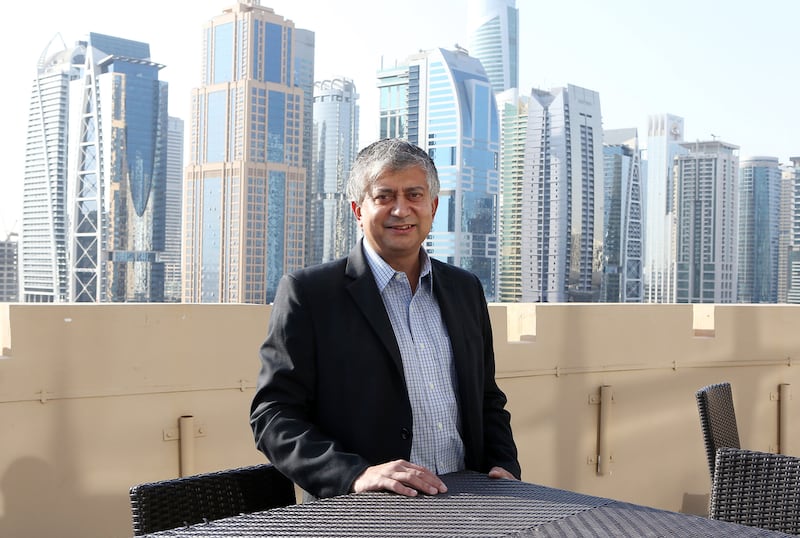Everybody has the capacity to come up with big world-changing ideas, according to Hitendra Patel, managing director of the Center for Innovation, a global consulting company based in Massachusetts in the United States. So why aren’t we all living up to our potential? It is a question that Mr Patel, who was recently in Dubai to speak at a breakfast organised by ShiftIn, a Dubai-based strategy management consultant group, has given a lot of thought.
What brought you to Dubai?
I was talking about innovation and how to make it real. Far too many companies know the importance of innovation and far too many have started the journey of innovation, but it still is in the space of Post-Its and workshops. When it comes to execution there is almost none. You say everyone has the capacity to come up with great ideas but we are obviously not all doing that, which could be to do with the fact that some people have more “dots” than others.
What do you mean by that?
It’s simple. If you just have three dots and you ask a person “what do you see?” They have to say they see a triangle and not much more than that. If you have more dots then you are able to see other pictures. It is no wonder that our relatives a long time ago were able to see things in the night sky. You would see Orion, bears or eagles, but today if you look at a night sky in Boston, New York or even Dubai it is so lit up that the best thing the kids are going to come up with is a triangle.
_________________________________
■ During UAE Innovation Week give us your thoughts about this critical area for our country's development, by email, Twitter, Facebook or Instagram, using the hashtag #UAEinnovators
_________________________________
So how do you get more dots?
That’s the fundamental question. Everyone has the capacity to get more dots, which is a little bit of curiosity, a little bit of inquisitiveness and a little bit of being interested.
But are they not innate qualities, things you essentially can’t teach?
It is inquiry. You have to teach people to have more curiosity. Every kid has it and somewhere along the way we, as parents and school systems, shut it down by saying you shouldn’t ask that question, where in reality asking a question is being smart. We have changed the paradigm completely when they get older saying asking questions is not smart. [Whereas] the more questions we ask, the better. So stay as a kid. Be curious as a kid and you are going to be fine. You have to be sure that the dots you get are not just from people who look like you. Unfortunately, their dots are going to be the same as your dots.
What do you mean by people who look like you?
If you are in marketing, everyone in marketing thinks very similarly. All the people in engineering think very similarly. Their education is similar. The paradigms are similar.
Are you suggesting that to fix a marketing problem it might be helpful to bring in an engineer?
The further out you go, the better. Start off with your inner circle and then move out into another department and go out further into other departments. Then you eventually get out to your customers, your suppliers. Look at your competitors. Even look at other industries. How would Walt Disney solve it? How would a Norwegian cruise ship crew solve it? And when you think about those other ways to solve it, suddenly you will say: “hey, maybe the solution is this”. But we tend to get stuck with the few dots that we have and we use the same dots again and again to come up with ideas.
How do you use your dots to come up with something else?
The first couple of times you connect those four dots you come up with a square. And if you ask another million people what they come up with, all of them will have the same answer. So why is that? Because the first time I asked you to connect them you used the paradigms of paths you had as a kid and said what was I told about connecting dots? All dots have to be straight lines and you have to connect every single dot. So no kidding, everyone comes up with a square. So now we ask them to connect the dots again, but connect them in a different way. And after two or three iterations you will see suddenly they will make the lines cross over each other and the lines will be curved. And then you say: “Do it again”. By the time you get to the ninth or 10th iteration, you will see some people, out of boredom or irreverence, might include a smiley face or do something else completely. Now they are breaking the rules.
Is that good?
It’s very good. What you need is the patience and persistence to get through those iterations. And then you also need to be able to understand and judge which rules you will break and which ones you will follow. You have to follow some of the rules and you have to break some of the rules and you have to make some of the rules. It’s a combination of those three that leads to the world’s best innovations.
business@thenational.ae
Follow The National's Business section on Twitter






